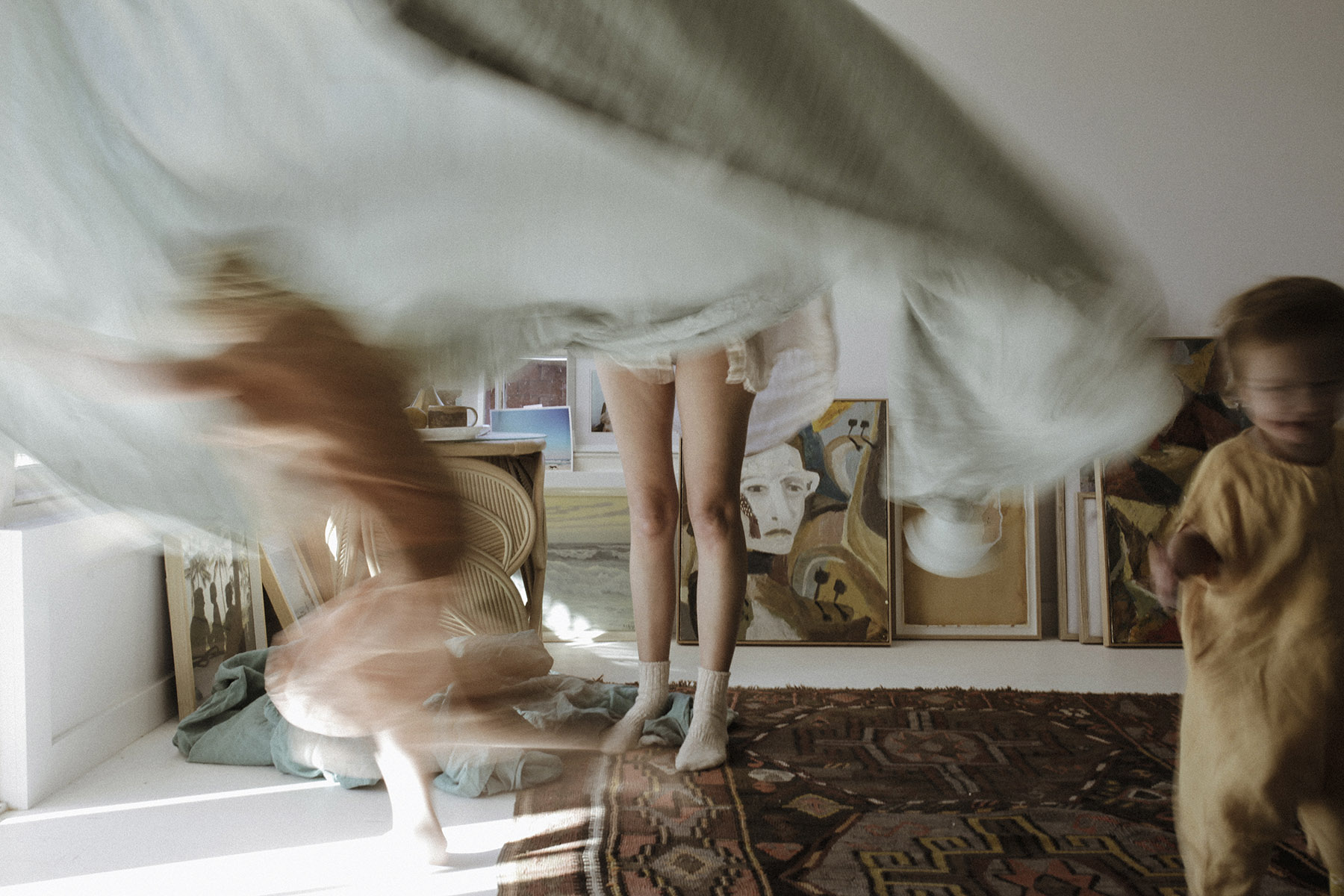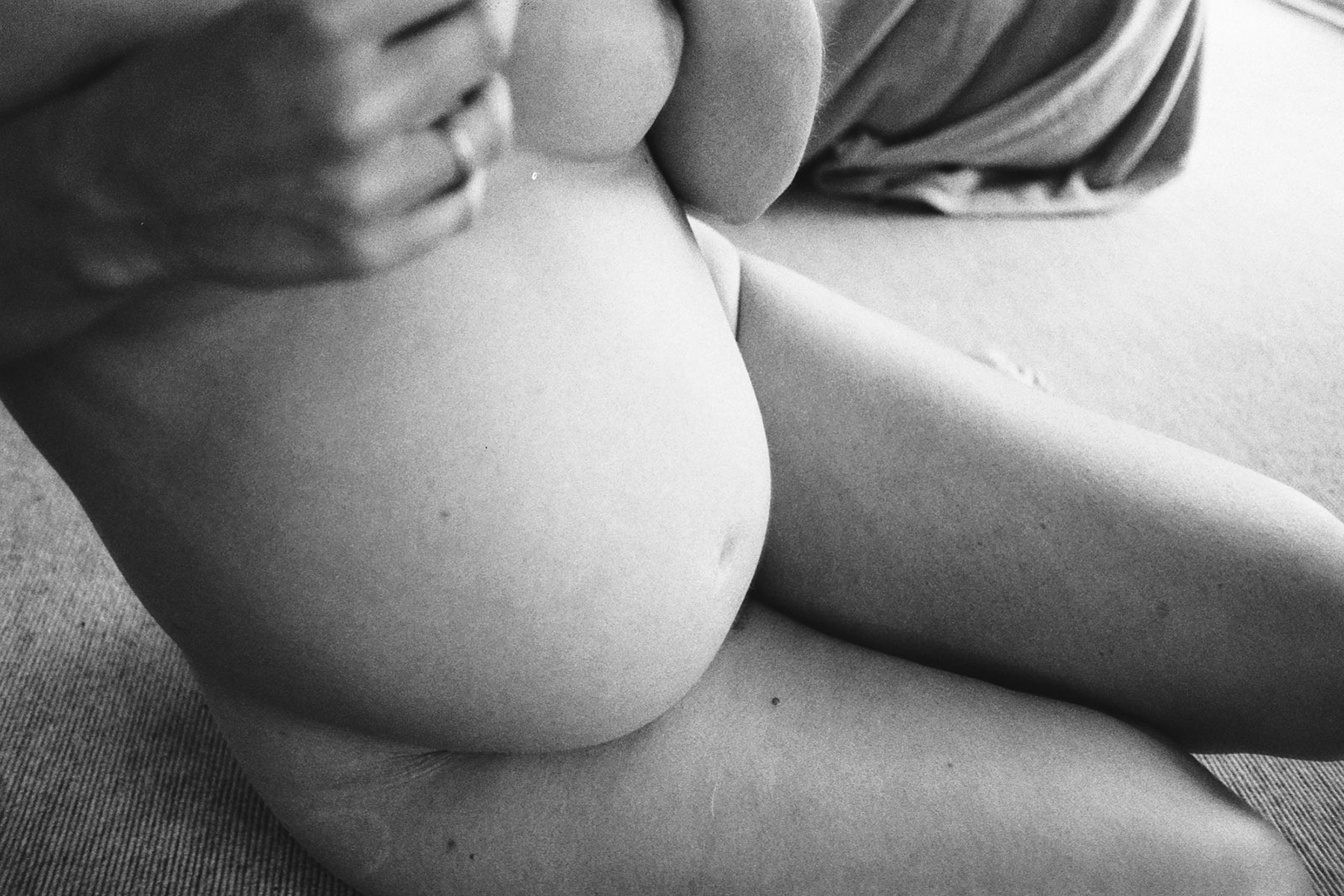Ilsa W.H. Kidd is an Australian photographer working in the realms of fashion, weddings, childbirth and portraiture. Despite winning the 2019 APA Film/Analogue Category for a single image, the real roots of Ilsa’s work are planted firmly in series-based photographic narrative. We got a hold of Ilsa while she was self-isolating due to COVID-19 and asked her to share some wisdom on her approach to photography and storytelling.

How would you describe your approach to photography?
I try to keep my photographic gaze natural and not too preconceived or controlled, as I like to be true to the subject or story, so my approach is somewhat organic and relaxed. In saying that though, there are works that have had a lot of preparation behind them working towards a specific concept or mood, but I always go into shooting them with room for movement and allowing the moment to work it’s magic.
As a photographer who often produces series-based work, was this a conscious decision that you made at some point or did you find yourself naturally drawn towards this style of photography?
I believe this was a natural path for me photographically. I have always been drawn to tell life’s stories, so the element of truth I strive for in my work, is further fuelled usually when it’s explored as a series. You can find more depth to be uncovered around the subject or theme when a story is told through many images not just the one. A series allows a photographer to have further expression and this in-turn reveals quite a bit more of the person creating the art, which I find as an artist is important, and is the ‘invisible’ pixels within a photograph. Photography, to me, is about catching the dance between the subject and the person behind the lens, and if this can be experienced through a series, it’s a wonderful visual tale.

Whilst having variance between bodies of work, your groupings within a series are always very precise in theme and tone. Do you tend to photograph a series all within a certain time frame or move between them, altering your stylistic approach as you go to keep them feeling homogeneous?
Oh thank you. I’ve been struggling with one ongoing series of mine lately as my photographic style is evolving and changing so the curation of that series pulling together for an exhibition (so to find it’s consistency in style) has been a bit of a challenge. Mainly as I switch between digital and analogue which we all known has a vast aesthetic difference. But in general, most of my series are shot in one time frame as a story in that time/place, with that day’s equipment and that day’s version of myself and my thoughts. I find it’s most natural to shoot stories (series) in that way, however there are some themes you wish to explore which can only be done over time. I like the challenge of that, and the mini-stories that series will then present later in its completion.

As we are currently on lockdown due to COVID-19, it’s a pretty difficult time to be an artist. How are you coping with the current situation?
As a paid artist, not swimmingly- but who is? As a storyteller, this time can be a great opportunity to create new work because of new felt experiences. I love looking at art history- and seeing how the times the artists’ were living through influenced and informed their art and what they were expressing in that time. It’s also nice to see what we can do as artists in this time, to not only provide a vehicle of expression for humanity digesting this global experience, but also a way to keep the arts alive and to work with the resources (or lack there of) creating something new. We’ve been so privileged to access whatever and whomever to create new work, that now we are in isolation, we truly have to work inside out- and find out what’s important to us (as an individual- what is it I am feeling? What is it I need to express? How?) We are very lucky to have the internet, so in that way we are certainly not isolated and can still keep up abundant communication. I plan to work on a window series, somewhat inspired by Fred Herzog, however I am going into this process without rush… I’m taking each day at a time, and using the message of now, which is ‘slow’, to approach something that I would like to be more documentary/historical than art directed or conceptualised. I also plan to use this “down time” to work hard on the back end of my work, as it’s not often we get a chance to pause, reflect and plan for a future no one knows what will look like. It’s a historical time, a time of hardship and loss, but is also rich in silver linings- for humanity, for nature, for storytelling (and so much more).

Do you often find inspiration in your immediate environment?
Not always, but I certainly do work from my experience of this life, and create work that is close to me. I wear my heart on my sleeve, and often invite the outside in quite comfortably (but through my work, not necessarily in person/in real life). I find a great source of inspiration in places, so when I’m in those new environments… and also in my children and being a mother (that is something deeply felt, you are shifted in how you see yourself and the world once you become a mother). I often create works around femininity, nature, intimacy and felt experiences, so I guess to answer your question- yes.

Do you have any parting advice for photographers looking to get started in series based work?
I’ve learnt it’s important to find your own voice and to express it through your style (it will naturally emerge) and the stories you feel important to create/tell. Lean into the uncomfortable, the unknown, the desires you have and the fears. This will open up exploration, and that is how we learn as photographers- by doing. Series work comes naturally to me, so I’m in fact starting to think more about doing one-shot artwork, the challenge of capturing an idea reduced and refined into one shot seems rather tricky to me. We are all learning, so trust your instinct and push aside any doubt to allow creativity to flow. Once the cogs are turning, you’ll need to then learn to navigate the cutting room floor- make sure every shot within that series adds to the collection and isn’t a repeat or taking away from the stillness in between the shots, giving room for audience interpretation and relation.

